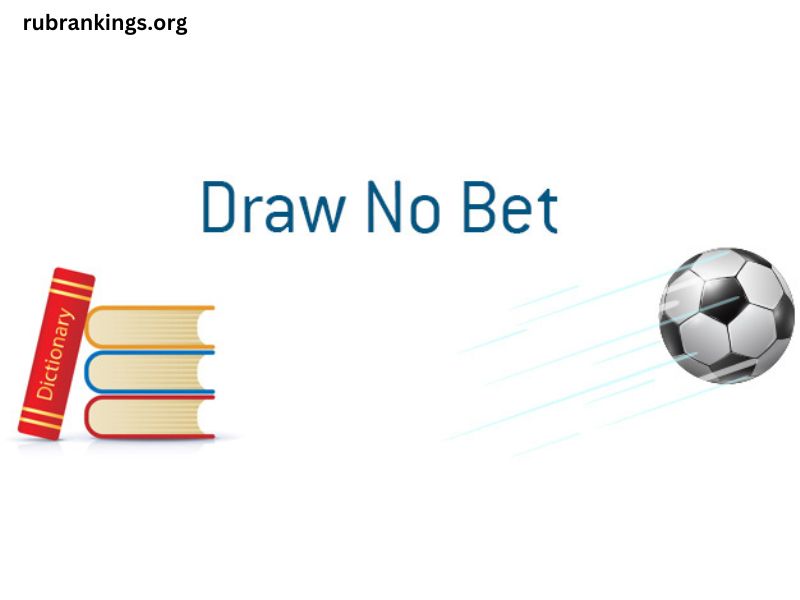When diving into the world of sports betting, you’ll encounter a variety of terms and betting options that can seem overwhelming. One such term is “Draw No Bet” (DNB). This betting option is particularly popular in soccer (football) and other sports where a draw is a possible outcome. In this article, we’ll explore what “Draw No Bet” means, how it works, its advantages and disadvantages, and some strategies for using it effectively.
What is “Draw No Bet”?
“Draw No Bet” is a type of wager that eliminates the possibility of a draw from the betting equation. Essentially, when you place a DNB bet on a team, you are betting that the selected team will either win the match or lose it. If the match ends in a draw, your stake is returned, making it a less risky option than traditional match betting.
For example, let’s say you place a DNB bet on Team A to win against Team B. The possible outcomes are as follows:
- Team A wins: Your bet is successful, and you receive your winnings based on the odds.
- Team B wins: You lose your stake.
- Match ends in a draw: Your stake is refunded.
This feature of DNB bets makes them appealing for bettors who want to mitigate risk, especially in tightly matched games where a draw is a plausible outcome.
How “Draw No Bet” Works
Example Scenario
Imagine a match between Team A and Team B, with the following odds:
- Team A to win: 2.00
- Team B to win: 3.50
- Draw: 3.20
If you opt for a DNB on Team A and place a stake of $100, your outcomes would be as follows:
- If Team A wins: You receive your initial stake back plus $100 (since 2.00 odds yield $200 total, including your stake).
- If Team B wins: You lose your $100 stake.
- If the match is a draw: You get your $100 stake back.
This example shows how DNB betting simplifies the betting process by focusing solely on the win/loss outcomes, effectively minimizing the potential for losing your stake due to a draw.
Where to Find DNB Bets
Most online sportsbooks offer a “Draw No Bet” option on various sports, especially in soccer, where draws are common. Look for DNB listed under match betting options or in the special bets section.
Advantages of “Draw No Bet”
1. Reduced Risk
One of the main benefits of DNB betting is the reduced risk. By eliminating the draw outcome, you can place your wager with greater confidence, particularly in matches where the teams are closely matched or have a history of draws.
2. Good for Close Matches
In games where both teams have similar skill levels, a draw is a realistic outcome. DNB provides a safety net in these scenarios, allowing you to back a team without the fear of losing your stake if the game ends in a stalemate.
3. Encourages Research
When you use DNB betting, it encourages you to conduct thorough research on team performance, head-to-head statistics, and other factors that may influence the outcome. This can lead to more informed betting decisions.
4. Appeals to Conservative Bettors
For bettors who prefer a more cautious approach, DNB betting offers a way to engage in sports wagering without the added risk of losing a stake to a draw. It allows you to participate in betting while maintaining a conservative strategy.
Disadvantages of “Draw No Bet”
1. Lower Odds
One downside to DNB betting is that the odds are often lower than traditional win/loss bets. This is because the draw option is removed, making it less risky for bettors. Consequently, if you win, your returns will be smaller compared to a straight bet on the same team.
2. Limited Availability
While DNB betting is popular in certain sports, it may not be available for all events or leagues. Some niche sports or less popular matches might not offer this betting option, limiting your choices.
3. Potential for Limited Payouts
In close matches, where a draw is highly likely, the potential for limited payouts exists. You might find that many matches result in a refund due to draws, which can be frustrating if you’re aiming for profit.
Strategies for Using “Draw No Bet”
1. Research Team Form
Before placing a DNB bet, research both teams’ recent performance, injuries, and historical matchups. Understanding how each team plays can help you make a more informed decision.
2. Analyze Match Context
Consider the stakes of the match. Is it a cup final, a relegation battle, or a friendly? The context can significantly influence how teams approach the game, which can affect the likelihood of a draw.
3. Compare DNB Odds
Always compare the DNB odds across multiple sportsbooks. Different bookmakers may offer varying odds for the same match, which can impact your potential return.
4. Combine DNB with Other Betting Options
You can also combine DNB with other betting markets, such as over/under goals or handicap betting. This approach can create more engaging and potentially profitable betting scenarios.
5. Use Live Betting Opportunities
Live betting allows you to assess the match dynamics and adjust your DNB bets accordingly. If one team appears dominant, placing a DNB bet mid-game can provide excellent value.
Conclusion
“Draw No Bet” is a compelling option for both novice and experienced bettors looking to minimize risk while engaging in sports betting. By understanding how it works and employing effective strategies, you can enhance your betting experience and make more informed decisions.
While it may not offer the highest potential payouts, the security of a stake refund in case of a draw makes it an attractive choice in competitive matchups. As with all forms of betting, the key lies in research, discipline, and understanding the nuances of the sport you’re betting on. With these elements in place, you can approach your DNB betting confidently and enjoy the excitement of sports wagering.



